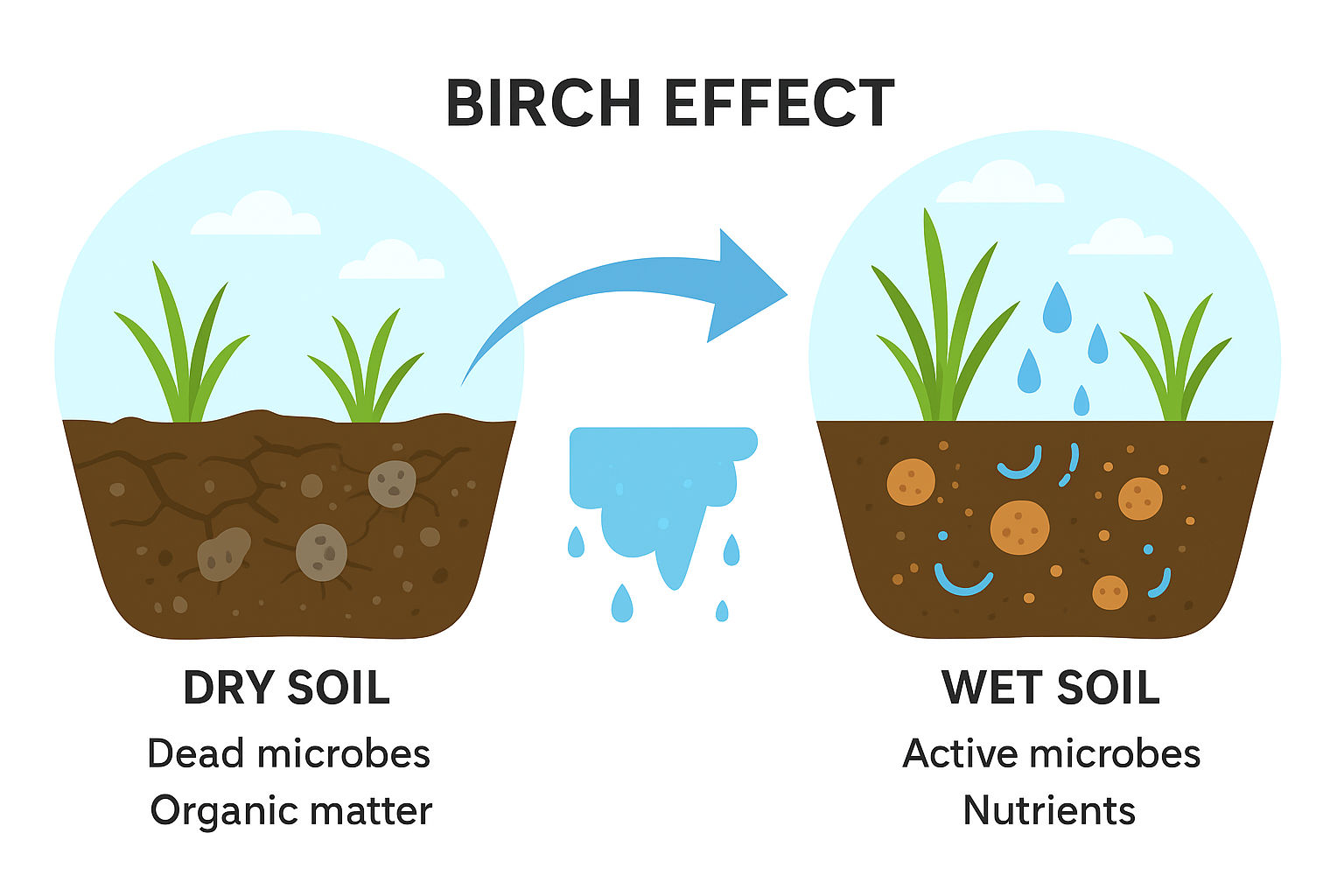What is the Birch Effect?
After the first effective rainfall, many farmers notice that the soil smells fresh, weeds appear quickly, and crops turn visibly greener — even before any fertilizer is applied. This sudden transformation is not magic; it’s science. The process behind this natural reaction of the soil is known as the Birch Effect.
Understanding the Birch Effect
The Birch Effect refers to the sudden release of nutrients and carbon dioxide from soil when it becomes moist again after being dry for a long period.
During extended dry conditions, most soil microorganisms either die or become inactive because of the lack of moisture. When the soil is re-wetted by rain or irrigation, the surviving microbes become active almost instantly. They start decomposing the dead microbial cells and accumulated organic matter, releasing nutrients locked during the dry phase.
This rapid burst of biological activity causes a flush of available nutrients, especially nitrogen, phosphorus, and sulfur, and an increased emission of carbon dioxide (CO₂). These nutrients become immediately available for plants, which is why farmers often observe quick, healthy growth soon after the first rains.
What Farmers See in the Field
The Birch Effect can be easily recognized in real field conditions. After the first rainfall:
-
The soil gives off a pleasant, earthy smell — a sign of revived microbial life.
-
Weeds germinate rapidly, and crops appear greener and more vigorous.
-
The overall soil fertility and plant energy seem to improve, even without any fertilizer.
However, this effect is temporary. The nutrient release lasts only for a short time, and if it’s not captured by active crop roots, nutrients may be lost through leaching or evaporation.
Importance for Crop Management
Understanding the Birch Effect allows farmers and agronomists to make smarter field decisions.
-
Timely sowing right after the first rain helps crops absorb the nutrients released naturally by the soil.
-
Maintaining good levels of organic matter — through compost, manure, or crop residues — enhances microbial activity and strengthens this effect.
-
Avoiding excess waterlogging and delayed planting minimizes nutrient losses.
By managing soil moisture, organic matter, and crop timing, farmers can use this natural process to improve nutrient efficiency, early crop growth, and overall soil health.
